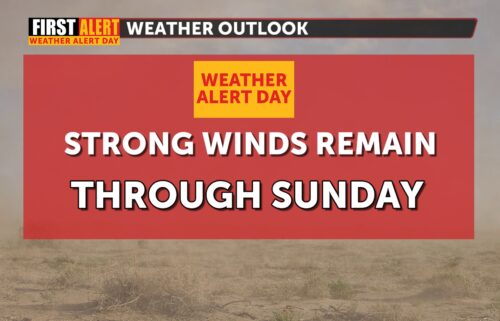How to safely quarantine after positive test or travel, even if you live with people
A lot of people are being told to quarantine after returning home from holiday travel as thousands of people test positive for coronavirus each day in Riverside County.
As a result, many are starting the new year under the advice to self-isolate – so what are the best practices?
If you live with roommates or family, county officials advise isolating in one room and away from others in your home.
You should use a separate bathroom if you can, but if that's not possible, clean the bathroom after each use.
Open windows, and use a fan or air conditioner in shared spaces to ensure good airflow.
If you do enter a common space with others from your household, keep a mask on.
Melissa Neiderman is now quarantining after returning last week to Palm Springs from a trip across the country. She and her husband have already tested negative, but they're still playing it safe and following the guidelines.
"We were very careful traveling back; we had everything you could imagine: mask and shield, all the wipes and everything," Neiderman said. "You could have a negative test result and still be positive, and also the symptoms could come way after we've gotten home, so we're still quarantined here."
Rancho Mirage resident Steve Ross just spent his first Christmas in 72 years alone. He's remained mostly in isolation since March, journaling on social media every day. His "pandemic posts" have now reached number 186.
He said he's found bright spots in self-isolating by connecting virtually with friends and family, and dusting off his childhood musical talent.
"I played the saxophone since I was in fourth grade and so I've gone back to becoming a saxophonist," Ross said.
Other tips are:
Stay home except to get medical care
- Do not go to work, school, or public areas.
- Stay home until at least 10 days have passed after the date of your last positive COVID Test and at least 3 days after you have recovered. Recovery means that your fever is gone for 72 hours without the use of fever-reducing medications and your respiratory symptoms (e.g. cough, shortness of breath) have improved.
- If you must leave home to get medical care, do not use public transportation. Use a personal vehicle if possible. If you cannot drive yourself, keep as much distance as possible between you and the driver, leave the windows down and wear a mask if possible. If you do not have a mask, wear a cloth face cover.
- If possible, arrange for food and other necessities to be left at your door. If you need help finding social services, essential items like food and medicines call 2-1-1.
Separate yourself from other people in your home
- Stay in a specific room and away from other people in your home as much as possible. It is particularly important to stay away from people who are at higher risk of serious illness.
- Use a separate bathroom. If this is not possible, clean the bathroom after use
Stay at least 6 feet from others.
- Open windows, use a fan or an air conditioner in shared spaces in the home, if possible, to ensure good airflow.
- Do not allow visitors and limit the number of people in your home.
- Do not handle pets or other animals.
- Do not prepare or serve food to others. unless no one else is available. Hands should be washed and gloves should be worn. (if available)
- Wear a facemask or cloth face cover when you are around others
- You should wear a facemask or cloth face cover when you are around other people (e.g., sharing a room or vehicle) or pets and before you enter a hospital or doctor’s office. If you do not have a mask, wear a cloth face cover. Note, a mask or cloth face cover should not be placed on anyone who has trouble breathing or is unable to remove it without assistance.
- If you are not able to wear a facemask or cloth face cover, then people who live with you should not be in the same room with you. If they must enter your room, they should wear a facemask. After leaving your room, they should immediately wash their hands, then remove and dispose of their disposable face cover or cloth coverage, and wash their hands again.
- Use masks and face covers with caution with children. Infants and children under 2 should not wear cloth face coverings. Those between the ages of 2 and 8 should use them but under adult supervision to ensure that the child can breathe safely and avoid choking or suffocation.




